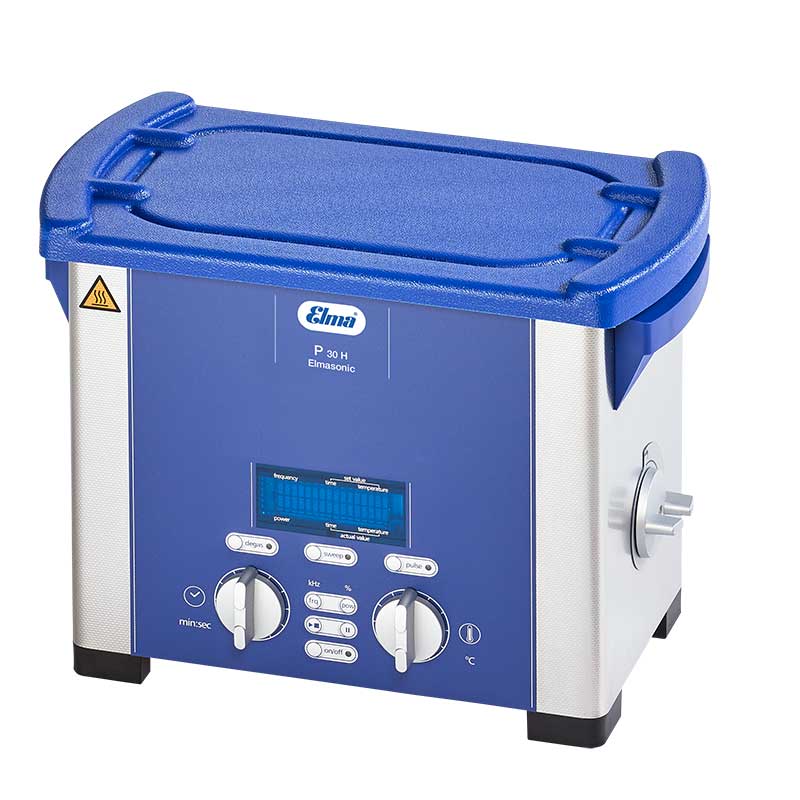
Ultrasonic Cleaner Degas: Why it’s Important
Getting the best results from your ultrasonic cleaner requires more than turning it on and immersing parts in the cleaning solution. Whether using a fresh cleaning solution or one that has been idle for a period of time, an ultrasonic cleaner degassing procedure yields improved cleaning results. Here we explain why and how the degas procedure is important.
What is Ultrasonic Cleaner Degassing?
In a sentence, it is getting the air (a gas) out of your ultrasonic cleaning solution.
And why is that important?
Let’s start with a simple illustration. In the morning, the glass of water you placed on your night stand the night before (but did not drink) has bubbles adhering to the glass. That demonstrates that water, a liquid, contains air.
The same applies to ultrasonic cleaning solution formulations, especially but not exclusively those you dilute with water. Examples include cleaning solution chemicals offered by iUltrasonic, our sister company.
Air can also be introduced as bubbles clinging to objects immersed in the ultrasonic bath. Examples of those object may include parts spray washed to remove loose contaminants before being lowered into your ultrasonic cleaner.
Degassing Ultrasonic Cleaning Solutions: Why Get the Air Out?
An article in Science Direct noted that a “study proved that degassing process can improve the cavitation effect dramatically both in intensity and scope.”
Stated otherwise, air and other gases contained in a freshly filled ultrasonic cleaning bath (or one remaining idle for a period of time) interfere with the performance and efficiency of your ultrasonic cleaner.
As explained in our post how ultrasonic cleaners work, ultrasonic cleaning is accomplished by the energy released from the violent and rapid formation and implosion of microscopic vacuum bubbles. The process is called ultrasonic cavitation.
These mighty bubbles blast loose and carry away the contaminants attached to the products you are cleaning.
So???
Bubbles and dissolved air in the cleaning liquid absorb ultrasonic energy and inhibit the implosion of these cavitation bubbles. This significantly reduces cleaning efficiency with its attendant impact on cleaning line throughput. And the impact on efficiency increases with the size of an ultrasonic cleaning tank.
Ultrasonic Cleaner Degas: How to Get the Air Out.
There are options on degassing an ultrasonic cleaning solution.
If you have an inexpensive benchtop ultrasonic cleaner used on an occasional basis, an ultrasonic cleaner degas can be accomplished relatively easily. Simply prepare your cleaning solution in your ultrasonic cleaner tank following dilution instructions. Turn on your unit and operate it for 10 to 20 minutes without a load.
Degassing is indicated when the swirl of air bubbles ceases.
A more practical and energy-efficient solution is to use an ultrasonic cleaner equipped with a degas and/or a pulse mode and carry out the process in advance of the cleaning operations.
A degas mode accelerates the removal of air contained in cleaning solutions by introducing short breaks in the ultrasonic operating cycle. This allows coalesced gas bubbles to rise to the surface and burst.
A pulse mode provides brief spikes in ultrasonic power that not only performs an ultrasonic cleaner degas but also speeds the removal of stubborn, strongly adhering contaminants. Pulse is also useful when an ultrasonic cleaner is used for mixing and sample prep in the lab.
Ultrasonic cleaners such as the benchtop Elmasonic P series available from Tovatech offer pulse and degas modes. Floor-mounted industrial Elmasonic x-tra ST ultrasonic cleaners offer a pulse mode to handle both cleaning and degassing. Other examples are listed in the table below.
Equipment Examples Performing Ultrasonic Cleaner Degas
As suggested above, some low cost ultrasonic cleaners, perhaps used by hobbyists, may be operated by a simple on-off switch.
But where ultrasonic cleaning, or using ultrasonic energy for operations such as mixing and sample prep in the lab, units offering a degas function, a pulse mode or both should be considered.
Here is a brief listing of Elmasonic benchtop equipment with ultrasonic cleaner degas or degas by the pulse method available from Tovatech.
| Series | Degas | Pulse | Models | Capacities (gallons) |
| Elmasonic E Plus | ✓ | 9 | 0.25 – 7.5 | |
| Elmasonic Select | ✓ | ✓ | 11 | 0.75 – 24 |
| Elmasonic P | ✓ | ✓ | 6 | 0.75 – 7.5 |
| Elmasonic xtra TT | ✓ | 4 | 0.79 – 4.8 |
Check our ultrasonic cleaners page for further details on these and other benchtop and industrial ultrasonic cleaners.
Degassing Summary
Degassing a fresh ultrasonic cleaning solution before initiating a cleaning cycle will greatly improve the efficiency of your operations.
It can be accomplished two ways: Operating your unit without a load for a period of time, the length of which depends on the volume of your cleaning tank.
And this easily avoided loss to productive cleaning time is repeated each time you replace spent ultrasonic cleaning solution.
A better method is using an ultrasonic cleaner equipped with a degas mode or a pulse mode (or in some cases both). Pulse adds functionality when you are removing highly tenacious contaminants or processing samples in the lab.
Contact the scientists at Tovatech for expert advice on selecting the best ultrasonic cleaner for your requirements . Rely on them also for tips on selecting the right cleaning solution chemicals to get the best performance from your equipment.

